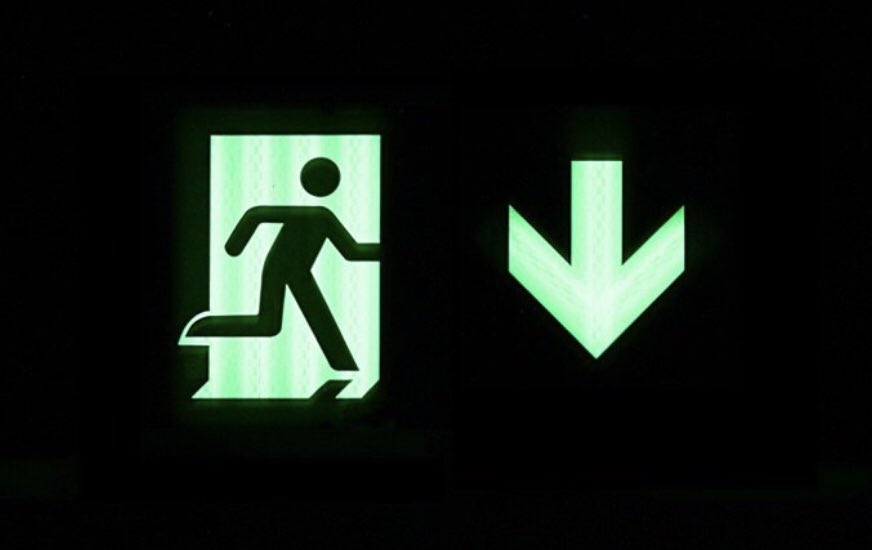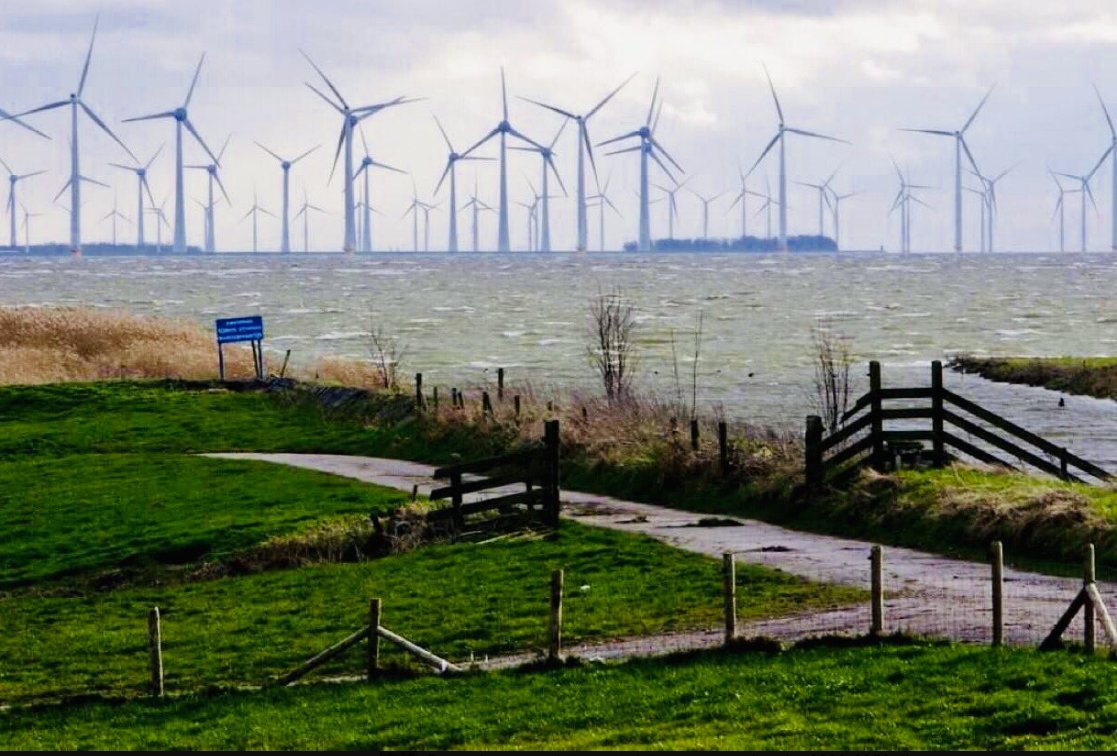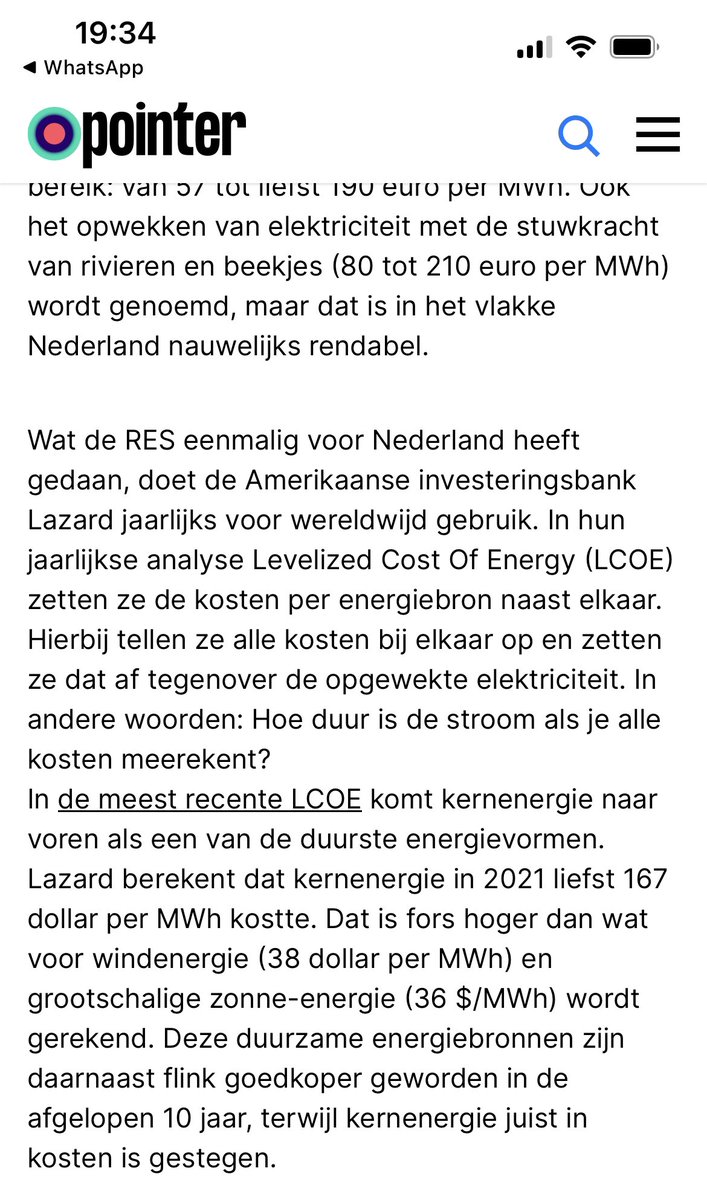Half a year ago, I had a thread (in Dutch) about the contaminated water in Fukushima.
Now it’s in the news again, so I thought: let’s do one in English.
Thread: 👇🏻
Now it’s in the news again, so I thought: let’s do one in English.
Thread: 👇🏻
https://twitter.com/larsroobol/status/1317914496531390471
1. Japan announced yesterday it will release its contaminated water into the ocean. The BBC had rather a nuanced article about it.
bbc.com/news/amp/world…
bbc.com/news/amp/world…
2. What’s going on? Since the accident in Fukushima, the molten reactor cores have to be cooled by water. When pumped back up, the water is contaminated with all sorts of radioactive substances, which are taken (using chemistry) out of the water.
meti.go.jp/english/earthq…
meti.go.jp/english/earthq…
3. Only tritium (tritiated water), is a problem, since it behaves (chemically) like ordinary water. So tritium remains, and only small traces from the other radioactive elements. And they have a million tonnes of that water stored there. 
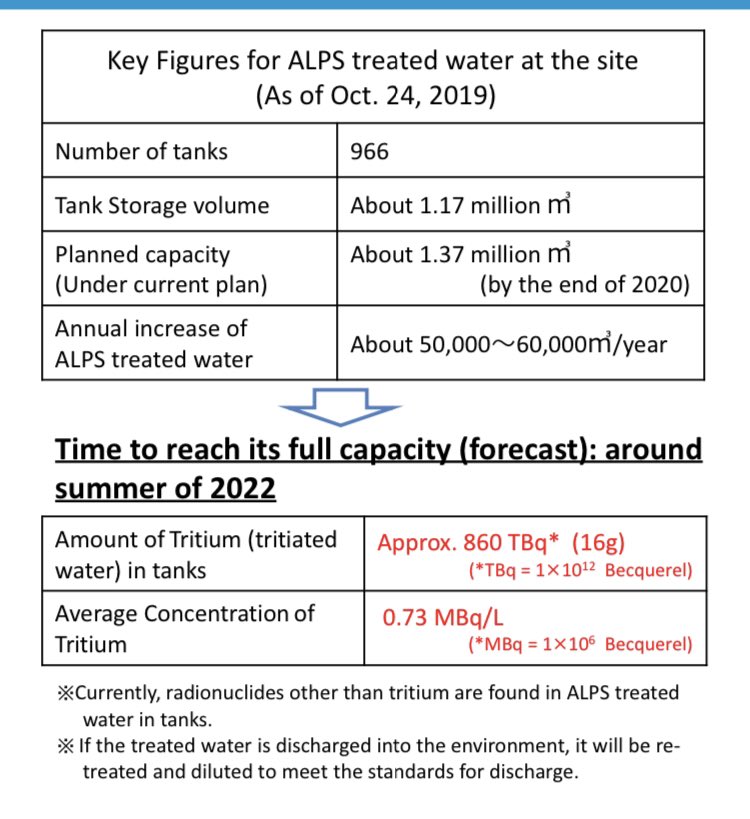
4. A MILLION TONNES OF RADIOACTIVE WASTE!!! 😱😱😱, I hear you thinking.
Well, let’s take this step by step, shall we?
First, let’s find out what tritium actually is.
Well, let’s take this step by step, shall we?
First, let’s find out what tritium actually is.

5. Chemically, it behaves like hydrogen: it’s a gas, and combines with oxygen to form water. There’s hydrogen, the heavier and non-radioactive deuterium, and the even heavier and radioactive tritium. 

6. It is the lightest and smallest radioactive isotope, and also emits the weakest radiation of all radionuclides. Very low energy beta radiation. 
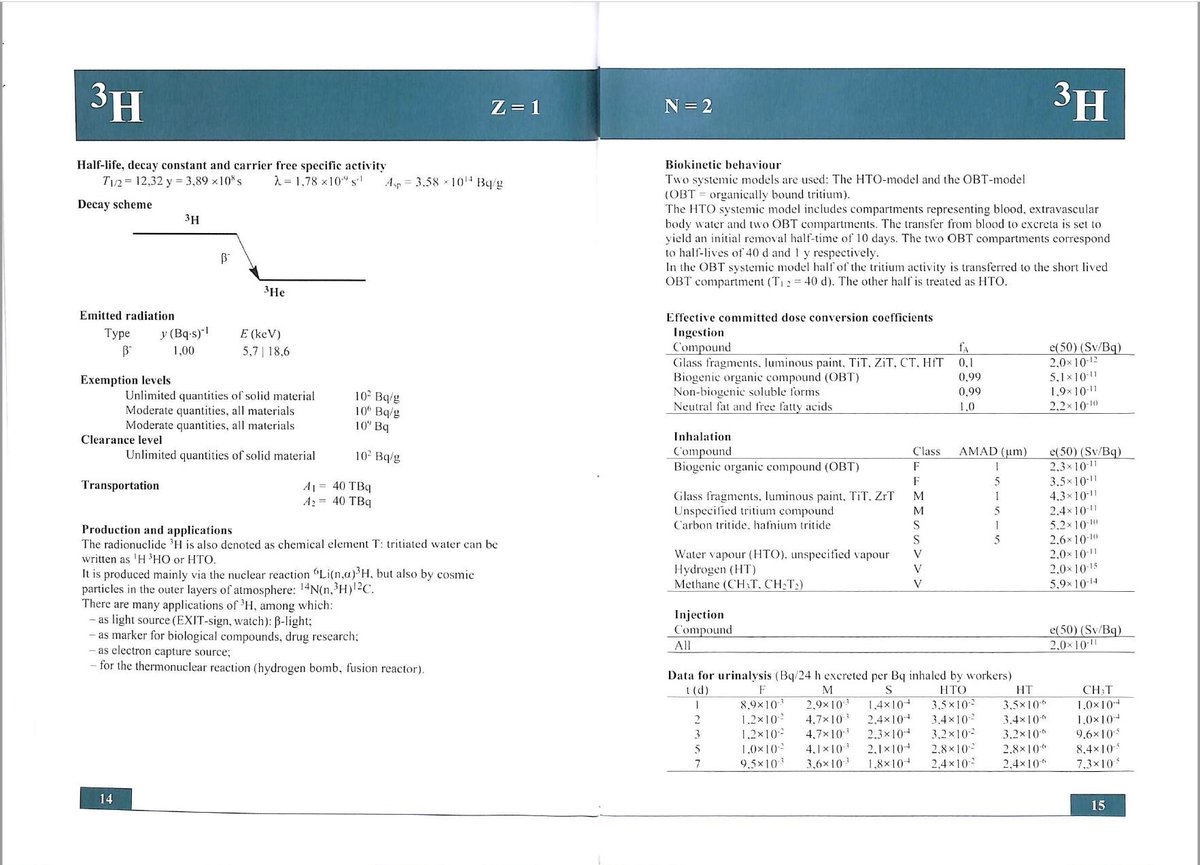
7. Common and natural sources of beta radiation are drinking water (tritium), bananas (potassium-40) and vegetables (carbon-14).
A veggie shake contains a few hundreds of bequerels per litre, becquerel (Bq) being a measure of the amount of radioactivity.
A veggie shake contains a few hundreds of bequerels per litre, becquerel (Bq) being a measure of the amount of radioactivity.

9. High up in the atmosphere, cosmic rays hit the nitrogen in the air, producing tritium constantly. It also decays (half life: 12,3 years), so there is an equilibrium amount of natural tritium on Earth: 2590 petabecquerels, or about 7 kg.
en.m.wikipedia.org/wiki/Tritium
en.m.wikipedia.org/wiki/Tritium

10. Also, the 2000+ atomic bomb tests have added some kilo’s, and nuclear facilities are also adding to the world’s inventory of the stuff.
For some examples of nuclear facilities and how much they emit, see the map below.
For some examples of nuclear facilities and how much they emit, see the map below.

11. Now back to Fukushima. They have 1,17 million tonnes of water, containing 860 terabecquerel (= 0,86 petabecquerel) of tritium, about 2,4 grammes.
Below it says 16 g, because they are quoting the mass of heavy water (HTO) and I am only counting the weight of tritium atoms.
Below it says 16 g, because they are quoting the mass of heavy water (HTO) and I am only counting the weight of tritium atoms.

12. The plan is to limit emissions to 22 terabequerel, mainly for licensing reasons. Worst case, that will give a dose of 1 mSv to someone. That is less than the annual dose nature will give us.
meti.go.jp/english/earthq…
meti.go.jp/english/earthq…
13. In the course of a year, a nuclear power plant emits about the same amount of tritium. I know that our own small (485 MW) Dutch power plant emits in the order of 10 terabecquerel per year. 

14. What else can we compare it with? As @FrankWunderli13 puts it: the rain that falls on Japan in the course of 4 year, contains as much tritium as what now is stored in Fukushima.
https://twitter.com/FrankWunderli13/status/1381886770380410883
15. So Chinese cartoons like this are hypocritical: the Chinese reactors discharge much more tritium in the sea than Japan, year after year. And still, that’s a tiny amount compared to natural levels. And the discharges are all licensed by very strict standards. 

* The discharges from Fukushima are SMALLER than they used to be before the accident.
* they will have an insignificant effect on nature, animals and people.
* the discharges are spread out over 30+ years, while 4 years of rainfall will rain down just as much tritium over Japan.
* they will have an insignificant effect on nature, animals and people.
* the discharges are spread out over 30+ years, while 4 years of rainfall will rain down just as much tritium over Japan.
• • •
Missing some Tweet in this thread? You can try to
force a refresh

